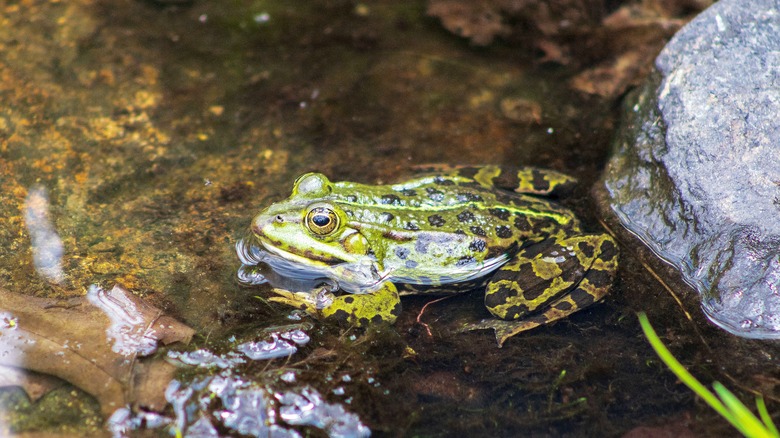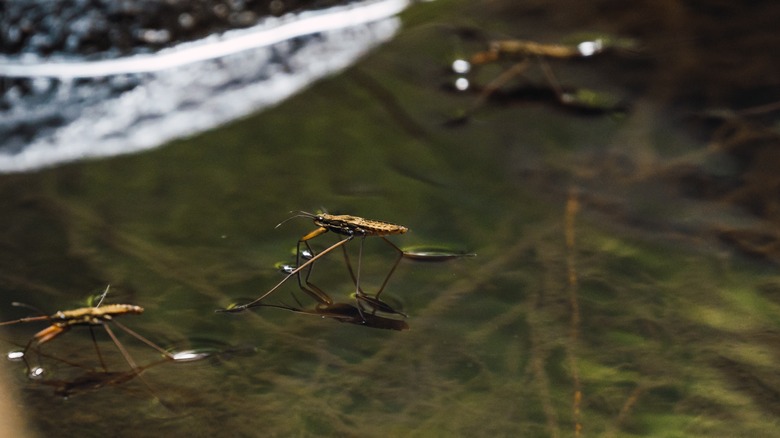Standing Water May Be Good For Frogs, But We Wouldn't Recommend It
If you're an eco-conscious gardener, chances are you've seen the U.K.'s Express' now-viral article urging homeowners to place a bucket of water in their backyards this summer to help save declining frog populations. Although this may seem like a simple solution to an urgent problem, we don't recommend it if you live in North America. Why, you ask? The short answer is: mosquitoes.
According to the United States Geological Survey (USGS), amphibian populations are declining in the U.S. as well. In fact, they're declining everywhere. This is an alarming sign of greater imbalances taking place in our natural world. With this knowledge, you may be feeling inspired to do everything you can to save the frogs. However, we suggest you think twice before filling your backyard with stagnant water, especially at the height of summer.
It's true that amphibians greatly benefit from standing water. Frogs and toads need a clean water source in order to breed. Along with native vegetation and pesticide-free ground cover, you can create a haven for these creatures to thrive. However, shallow stagnant water is also a breeding ground for mosquitoes — literally. This means your amphibian habitat could quickly become mosquito territory. With a mosquito problem, your backyard will be an unpleasant and a potentially hazardous place to be. Unlike in the United Kingdom, where the Express article was published and originally circulated, the United States is experiencing a rise in mosquito-borne diseases.
Downsides of standing water and safer ways to help amphibians
Frogs and toads are drawn to shallow and bog-like water, which is the very same environment where mosquitoes lay their eggs. Mosquitoes are prolific creatures. They will breed in backyard water fixtures as well as small amounts of water, including open containers, planters, and even water reservoirs of coffee makers. Needless to say, stagnant water is one of the biggest mistakes that will attract mosquitoes to your yard. Although frogs eat mosquitoes, it's not their primary food source, so you may not want to rely on them for natural pest control.
Mosquito eggs begin to hatch within 24 to 72 hours, which means that within a few days, you could have a problem on your hands. Although malaria was eliminated from the U.S. in 1951, the mosquito species that was a primary carrier for the disease is still found in large numbers throughout the eastern and southeastern United States. While not considered a current threat, a handful of homegrown cases have been reported in recent years. West Nile remains the main mosquito-borne disease in the country, as well as encephalitis and dog heartworm disease.
The good news is that you can attract frogs to your garden without the presence of still water. A pile of moist logs can provide excellent shelter. Compost piles and abundant native greenery are welcome food sources for amphibians. If you're still exploring the idea of installing a small pond, you can keep backyard water features mosquito-free through various natural methods or by adding a pump that keeps the water circulating.

